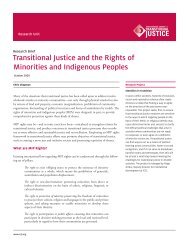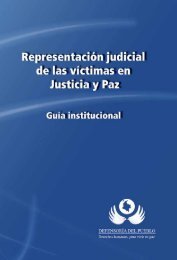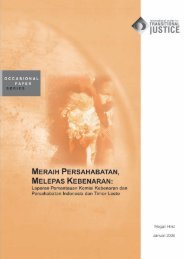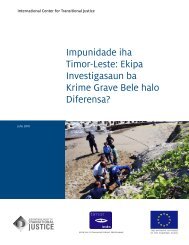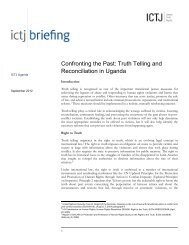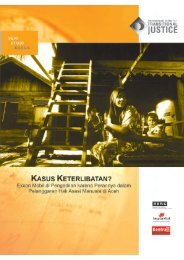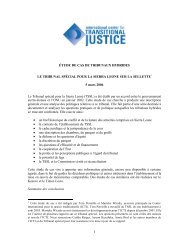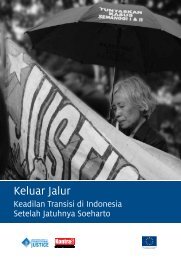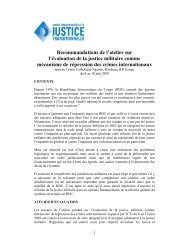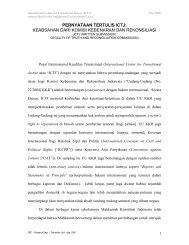That Someone Guilty Be Punished - International Center for ...
That Someone Guilty Be Punished - International Center for ...
That Someone Guilty Be Punished - International Center for ...
Create successful ePaper yourself
Turn your PDF publications into a flip-book with our unique Google optimized e-Paper software.
meeting at UN headquarters soon after taking up the post of prosecutor, Goldstone had “been<br />
in<strong>for</strong>med ahead of time that at least one indictment had to be issued be<strong>for</strong>e the … meeting in<br />
order to demonstrate that the system was working and that the tribunal was worthy of financial<br />
support.” 59 With the Tribunal starved <strong>for</strong> cash, the prosecutor indicted Nikolić because<br />
“he was the only person against whom we had sufficient evidence to justify an indictment”<br />
at that time. 60<br />
But this alone does not explain the early indictments. Why, after all, did the OTP have<br />
sufficient evidence against someone who played a comparatively minor role in the system<br />
of atrocities in Bosnia? A significant part of the answer stems from the fact that it is easier<br />
<strong>for</strong> a prosecutor to prove the guilt of direct perpetrators than that of individuals who are the<br />
chief architects of systemic atrocities but who did not carry out atrocities themselves and<br />
are often physically removed from the scenes of the crimes. 61 At first, Goldstone pursued a<br />
pyramid theory of prosecution: Comparatively low-level suspects would provide evidence that<br />
establishes the responsibility of their superiors, and the ICTY prosecutors would follow the<br />
evidentiary leads upward until they reached the top of the pyramid. 62<br />
Some responsibility <strong>for</strong> the patterns reflected in early indictments—which do not add<br />
up to a strategic vision—belongs to the Tribunal’s Investigation Division, which was responsible<br />
<strong>for</strong> directing investigations until Prosecutor Carla Del Ponte put the direction of all<br />
investigations under the senior trial attorneys, who provided much-needed guidance. The way<br />
the OTP was initially structured brought further inefficiencies into a young institution that<br />
had to find its footing in the midst of extraordinary challenges. ICTY prosecutors would later<br />
acknowledge that some of their early indictments were weak, although they attributed this to<br />
yet another source of pressure: judges who were “impatient with the pace of indictments and<br />
deteriorating public confidence.” 63<br />
The same sort of pressures that led the prosecutor to indict Dragan Nikolić also led<br />
him to issue his second indictment against another low-level suspect, Dušan Tadić. With the<br />
war in Bosnia very much underway during the ICTY’s first two and a half years, the Tribunal<br />
was hard-pressed to obtain custody of indicted suspects. Goldstone saw an opportunity when<br />
German authorities arrested Tadić—whom Bosnian refugees from Prijedor had identified—in<br />
Munich, in February 1994. The ICTY immediately indicted Tadić; two months later Germany<br />
transferred to the ICTY the first person to face trial be<strong>for</strong>e it.<br />
More than another year would go by be<strong>for</strong>e the prosecutor indicted individuals whom<br />
Bosnians would not consider “small fish”—Radovan Karadžić and Ratko Mladić. Their indictments<br />
marked a significant turning point <strong>for</strong> the Tribunal, significantly enhancing its credibility<br />
and viability. It would take another four years, however, be<strong>for</strong>e the ICTY prosecutor—by<br />
then Louise Arbour—would indict Yugoslav wartime leader Slobodan Milošević.<br />
THAT SOMEONE GUILTY BE PUNISHED 25




